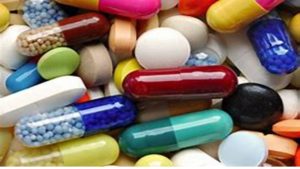
In 2013 biologics became a hot topic for benefit programs. These drugs are marketed as being able to treat severe chronic conditions such as rheumatoid arthritis, Crohn’s disease, psoriasis, and many more. For those suffering from these severe conditions, biologics can drastically improve quality of life; however, these drugs come at an enormous cost for individuals who without public or private drug plan assistance would likely not be able to afford them.
As a plan sponsor, if you or someone on your benefit plan was taking a biologic drug, chances are you know about it. The initial costs of these drugs over the course of a few months can be in the tens of thousands of dollars. Moving forward in the future, we will see these drugs used more frequently as drug companies increase development and marketing for biologics.
Below are frequently asked questions regarding biologics, and what private plan sponsors are doing to manage the costs of these expensive drugs.
What is the difference between traditional drugs and biologics?
Drugs are manufactured by combining specific chemical ingredients in a process to create specific molecules that form the active ingredient of the drug. A biologic is manufactured using DNA technology in a living organism and are usually made of plant or animal cells, which form very large complex molecules or mixtures of molecules. As an example, Aspirin is a small molecule drug and is made up of 21 atoms, whereas a typical biologic drug consists of 20,000 atoms.
Why do biologics cost more than regular drugs?
The main difference between the cost of regular drugs and biologics is that the manufacturing process is much more complex. Creating these large chains of molecules requires specific materials and complex processes which are difficult to replicate from start to end. The process is so difficult that the same manufacturer making the same biologic drug at two separate facilities are not able to make the drug identical. In addition to the manufacturing process, much of the cost goes towards the case management of the drug to coordinate getting the drug directly from the manufacturer to the end user.
Will costs for these drugs go down when they come off patent like generic versions of brand name drugs?
For a generic drug to be approved it must be considered ‘bioequivalent’, which means that it has the same active ingredient, strength, dosage, and synthesis in the body. Generic drugs are meant to be the same as the brand drug they mimic. Establishing bioequivalence for a regular drug is simple and a completed drug can usually be analyzed to determine all its components. However, it can be much more difficult, impossible even, to fully analyze all the components of a biologic drug through current testing methods. Due to the complex manufacturing process for biologics described earlier, Subsequent Entry Biologics (SEB’s) as they are called, cannot be exactly bioequivalent. The only way to establish equivalency then is to test if the drug is therapeutically equivalent by conducting clinical trials. All these challenges increase the cost for new manufacturers to enter the biologic drug market. Therefore, while some costs of drugs will be lowered by SEB’s entering the marketplace, the savings will not be as large as buying the ‘generic’.
How are plan sponsors and members managing these costs?
There are several ways to mitigate the cost and risk associated with biologics. While typical reactions are to claw back benefits for members there are proactive ways to manage costs.
- Coordinate plan member drug costs with public assistance programs such as Trillium Drug Plan in Ontario.
- Establish prior authorization for high cost drugs to ensure they are being prescribed for the right reasons and after other treatment options have been explored.
- Preferred Provider Networks and Health Case Management – when a member is prescribed a biologic (often an injectable) drug, they can be referred to specific providers where the drug can be dispensed. These preferred providers often offer a lower mark-up on drugs due to the added volume of the drugs they order and dispense.
- Establish a drug cap or co-insurance on your drug plan – while moving more of the cost onto the employee is not always optimal it is proven to lower costs for regular drugs in deciding whether to buy the brand name or the generic. For biologics, employees will not qualify for public assistance unless they are paying part of the cost themselves and/or their plan is capped.
